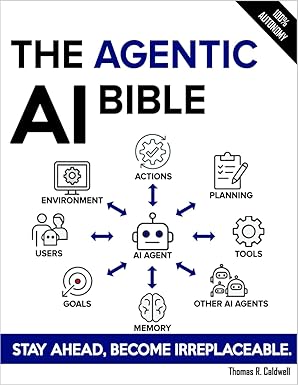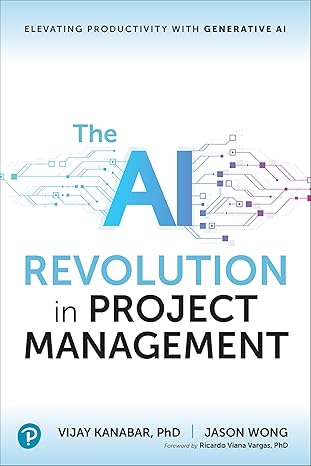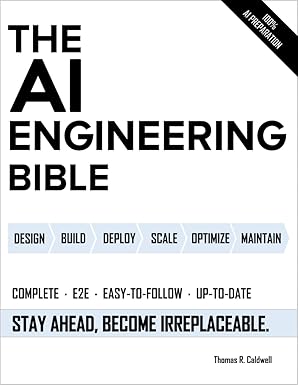How to Monetize AI Agents: 7 Example Business Models That Could Generate $10K-$100K+ Monthly

Ad Space
How to Monetize AI Agents: 7 Example Business Models That Could Generate $10K-$100K+ Monthly
The AI agent monetization opportunity is massive, but most people don't know where to start or what's realistically achievable. While the technology is powerful, success comes down to understanding proven business models, realistic market opportunities, and practical implementation strategies.
This guide examines 7 viable AI agent business models, complete with market analysis, revenue projections based on industry data, and step-by-step implementation guidance. These aren't fictional success stories—they're realistic scenarios based on actual market opportunities and pricing data from existing businesses in these spaces.
Important Note: The revenue projections in this guide are based on industry research, market analysis, and existing business models. Actual results will vary significantly based on execution, market conditions, competition, and many other factors. These examples are educational and designed to help you understand what's possible, not guarantee specific outcomes.
Understanding AI Agent Business Models
Before diving into specific examples, it's important to understand the fundamental ways AI agents create value:
Cost Reduction: Automating expensive manual processes Revenue Generation: Creating new income streams or improving existing ones Efficiency Gains: Enabling businesses to serve more customers with the same resources Quality Improvement: Reducing errors and improving consistency
The most successful AI agent businesses combine multiple value drivers and focus on solving expensive problems that businesses are already spending money to address.
Example #1: E-commerce Customer Service Automation
Market Opportunity: E-commerce businesses spend an average of $15-50 per customer on support costs, with larger retailers spending millions annually on customer service operations.
Business Model: Offer AI-powered customer service automation specifically for e-commerce stores, handling common inquiries like order status, returns, shipping questions, and product information.
Revenue Potential Analysis
Target Market:
- Small to medium e-commerce stores (1,000-10,000 orders/month)
- Average customer service cost: $8,000-25,000/month
- Potential cost reduction: 60-80%
Pricing Strategy:
- Setup fee: $2,500-5,000 per client
- Monthly retainer: $1,500-4,000 based on order volume
- Performance bonus: 10-15% of demonstrated cost savings
Revenue Projections:
- 20 clients at $2,000 average monthly fee = $40,000/month
- 30 clients at $2,500 average monthly fee = $75,000/month
- Annual setup fees (24 new clients) = $84,000 additional
Key Success Factors:
- Deep understanding of e-commerce customer service workflows
- Proven ROI metrics and case studies
- Seamless integration with popular e-commerce platforms
- White-glove onboarding and support
Implementation Steps:
- Market Research (Month 1): Study e-commerce customer service pain points and costs
- MVP Development (Months 2-3): Build basic automation for common inquiries
- Pilot Program (Month 4): Test with 2-3 friendly e-commerce businesses
- Refinement (Month 5): Improve based on pilot feedback
- Sales & Marketing (Month 6+): Scale to target client base
Challenges to Consider:
- Each client has unique products, policies, and systems
- Maintaining quality while scaling
- Competition from larger customer service platforms
- Seasonal fluctuations in e-commerce volume
Example #2: Content Creation Service for Marketing Agencies
Market Opportunity: Marketing agencies struggle with content creation bottlenecks, often turning down work or missing deadlines due to capacity constraints. The content marketing industry is worth over $400 billion globally.
Business Model: Provide white-label AI-powered content creation services to marketing agencies, enabling them to scale content production without hiring additional writers.
Revenue Potential Analysis
Target Market:
- Small to medium marketing agencies (5-50 employees)
- Current content creation costs: $150-400 per blog post
- Typical agency content volume: 20-100 pieces per month
Pricing Strategy:
- Blog posts: $75-150 each (50-75% cost reduction for agencies)
- Social media packages: $500-1,500/month
- Email sequences: $800-2,000 per sequence
- Bulk packages: $3,000-10,000/month
Revenue Projections:
- 15 agency partners at $4,000 average monthly spend = $60,000/month
- 25 agency partners at $3,200 average monthly spend = $80,000/month
- Project-based work adds 20-30% additional revenue
Key Success Factors:
- Multi-stage quality control process (AI + human oversight)
- Fast turnaround times (3-5 days vs. industry standard 2-3 weeks)
- Consistent brand voice matching for each agency's clients
- Scalable systems and processes
Implementation Steps:
- Skill Development (Month 1): Master AI content creation tools and workflows
- Quality System (Month 2): Develop review and editing processes
- Partner Outreach (Month 3): Connect with marketing agencies
- Pilot Projects (Month 4): Deliver sample work to build credibility
- Scale Operations (Months 5-6): Systematize and grow client base
Challenges to Consider:
- Maintaining unique voice for different clients
- Quality control at scale
- Keeping up with industry trends and current events
- Competition from in-house AI adoption
Example #3: Real Estate Lead Qualification Service
Market Opportunity: Real estate agents spend 60-70% of their time on unqualified leads. The average agent contacts 100 leads to close 2-3 deals, making lead qualification extremely valuable.
Business Model: Provide AI-powered lead qualification services that pre-screen prospects, schedule appointments with qualified leads, and nurture unqualified leads until they're ready.
Revenue Potential Analysis
Target Market:
- Individual real estate agents and small teams
- Average agent income: $50,000-150,000/year
- Time spent on lead qualification: 20-30 hours/week
- Value of qualified appointment: $500-2,000
Pricing Strategy:
- Monthly subscription: $497-1,497 based on lead volume
- Pay-per-qualified-lead: $25-75 per qualified appointment
- Setup and training fee: $997
Revenue Projections:
- 50 agents at $750 average monthly fee = $37,500/month
- 75 agents at $600 average monthly fee = $45,000/month
- Setup fees (15 new agents monthly) = $15,000 additional
Key Success Factors:
- Deep understanding of real estate sales process
- Integration with popular real estate CRMs
- Proven increase in qualified appointments (3-5x improvement)
- Compliance with real estate regulations and calling laws
Implementation Steps:
- Industry Research (Month 1): Study real estate lead qualification processes
- Technology Setup (Month 2): Build calling and CRM integration systems
- Compliance Review (Month 3): Ensure adherence to regulations
- Agent Partnerships (Month 4): Start with 5-10 pilot agents
- Referral Program (Month 5+): Leverage satisfied agents for growth
Challenges to Consider:
- Varying state regulations for automated calling
- Building trust with prospects who know they're talking to AI
- Integration with dozens of different CRM systems
- Seasonal fluctuations in real estate markets
Example #4: HR Recruitment Automation Platform
Market Opportunity: Companies spend an average of $4,700 per hire and 36 days to fill a position. HR departments are overwhelmed with resume screening, initial interviews, and administrative tasks.
Business Model: Offer comprehensive recruitment automation including resume screening, initial candidate interviews, reference checking, and onboarding coordination.
Revenue Potential Analysis
Target Market:
- Small to medium businesses (50-500 employees)
- Current recruitment costs: $15,000-50,000 per hire (including time and resources)
- Hiring volume: 2-20 positions per month
Pricing Strategy:
- Small business: $299-799/month (1-50 employees)
- Medium business: $800-2,499/month (51-200 employees)
- Large business: $2,500-7,500/month (200+ employees)
- Per-hire fee: $500-1,500 per successful placement
Revenue Projections:
- 60 small business clients at $500 average = $30,000/month
- 25 medium business clients at $1,500 average = $37,500/month
- 10 large business clients at $4,000 average = $40,000/month
- Total potential: $107,500/month
Key Success Factors:
- Compliance with employment laws and EEOC requirements
- Integration with popular HR systems and job boards
- High-quality candidate experience
- Proven reduction in time-to-hire and cost-per-hire
Implementation Steps:
- Compliance Research (Month 1): Understand employment law requirements
- Platform Development (Months 2-4): Build screening and interview systems
- Integration Setup (Month 5): Connect with HR systems and job boards
- Pilot Program (Month 6): Test with 3-5 companies
- Market Launch (Month 7+): Scale to target market
Challenges to Consider:
- Complex compliance requirements vary by location
- Candidate experience expectations are high
- Integration with numerous HR systems
- Bias prevention in AI decision-making
Example #5: E-commerce Conversion Optimization Service
Market Opportunity: The average e-commerce conversion rate is 2-3%, meaning 97-98% of visitors leave without buying. Even small improvements in conversion rates can generate significant revenue increases.
Business Model: Provide AI-powered conversion rate optimization services including automated A/B testing, personalized product recommendations, and dynamic pricing optimization.
Revenue Potential Analysis
Target Market:
- E-commerce stores with $100K-10M annual revenue
- Average conversion rate improvement potential: 15-40%
- Typical monthly revenue: $8K-800K
Pricing Strategy:
- Performance-based: 15-25% of additional revenue generated
- Monthly retainer: $2,000-6,000 based on store size
- One-time audit: $3,000-8,000
Revenue Projections:
- 15 clients generating $5,000 average monthly fees = $75,000/month
- Performance bonuses add 30-50% additional revenue
- One-time audits: $15,000-25,000/month additional
Key Success Factors:
- Proven track record of conversion improvements
- Integration with major e-commerce platforms
- Clear ROI tracking and reporting
- Continuous optimization and testing
Implementation Steps:
- Platform Expertise (Month 1): Master major e-commerce platforms
- Tool Development (Month 2): Build optimization and testing tools
- Case Studies (Month 3): Create proven results with pilot clients
- Sales Process (Month 4): Develop performance-based pricing model
- Scale Operations (Month 5+): Systematize and grow client base
Challenges to Consider:
- Proving ROI attribution can be complex
- Different platforms require different approaches
- Seasonal variations in e-commerce performance
- Competition from established optimization tools
Example #6: Legal Research and Document Analysis Service
Market Opportunity: Law firms spend 20-30% of billable time on research and document review. Paralegals cost $200-400/hour, creating significant cost-saving opportunities.
Business Model: Provide AI-powered legal research, contract analysis, and document review services to law firms and corporate legal departments.
Revenue Potential Analysis
Target Market:
- Small to medium law firms (5-50 attorneys)
- Corporate legal departments
- Current research costs: $15,000-100,000/month per firm
Pricing Strategy:
- Hourly rate: $75-150 (vs. $200-400 for human paralegals)
- Monthly retainer: $5,000-15,000 for ongoing support
- Project-based: $3,000-30,000 depending on scope
Revenue Projections:
- 15 law firm clients at $8,000 average monthly retainer = $120,000/month
- Project work adds 25-40% additional revenue
- Hourly work fills capacity gaps
Key Success Factors:
- Legal expertise and proper citation formats
- High accuracy rates (99%+) with human oversight
- Integration with legal research databases
- Strict confidentiality and security measures
Implementation Steps:
- Legal Training (Months 1-2): Develop legal research expertise
- Security Setup (Month 3): Implement enterprise-grade security
- Database Integration (Month 4): Connect with legal research platforms
- Pilot Program (Month 5): Work with 2-3 friendly law firms
- Market Expansion (Month 6+): Scale to target market
Challenges to Consider:
- Extremely high accuracy requirements
- Complex confidentiality and security needs
- Skepticism from legal professionals about AI
- Keeping up with changing laws and regulations
Example #7: Social Media Management for Small Businesses
Market Opportunity: Small businesses struggle with consistent social media presence but can't afford full-service agencies. The social media management market is worth over $17 billion globally.
Business Model: Provide AI-powered social media management services specifically designed for small local businesses, including content creation, posting, engagement, and performance reporting.
Revenue Potential Analysis
Target Market:
- Local small businesses (restaurants, retail, services)
- Current social media costs: $500-2,000/month for basic management
- Target market size: Millions of small businesses globally
Pricing Strategy:
- Basic package: $297/month (3 platforms, 15 posts/month)
- Professional package: $597/month (5 platforms, 30 posts/month)
- Premium package: $997/month (unlimited platforms, 60+ posts/month)
Revenue Projections:
- 150 clients at $400 average monthly fee = $60,000/month
- 250 clients at $350 average monthly fee = $87,500/month
- Upsells and add-ons increase average revenue per client
Key Success Factors:
- Understanding local business needs and constraints
- Authentic engagement that doesn't feel automated
- Consistent brand voice for each client
- Clear ROI metrics and reporting
Implementation Steps:
- Market Research (Month 1): Study small business social media needs
- Content Systems (Month 2): Develop content creation workflows
- Local Partnerships (Month 3): Connect with business associations
- Pilot Program (Month 4): Test with 10-15 local businesses
- Scale Operations (Month 5+): Systematize and expand geographically
Challenges to Consider:
- High client volume requires efficient systems
- Maintaining authenticity at scale
- Platform algorithm changes affect reach
- Price sensitivity of small business market
Universal Success Principles for AI Agent Businesses
After analyzing these business models, several key principles emerge:
1. Solve Expensive Problems
All successful AI agent businesses target problems that cost their customers significant time or money. Focus on processes that currently require substantial human resources.
2. Demonstrate Clear ROI
Successful businesses can show concrete cost savings or revenue increases. Develop metrics and tracking systems to prove your value.
3. Start with One Vertical
Rather than trying to serve everyone, focus on one industry where you can develop deep expertise and understanding of specific challenges.
4. Maintain Human Oversight
The most successful implementations combine AI efficiency with human quality control and relationship management.
5. Build Scalable Systems
Design your operations to handle growth without proportional increases in costs or complexity.
Revenue Model Comparison
Based on industry data, here's how different pricing models typically perform:
Subscription/Retainer Model
- Pros: Predictable revenue, high customer lifetime value
- Cons: Requires consistent value delivery
- Typical Monthly Revenue per Client: $500-3,000
- Best For: Ongoing services with regular deliverables
Performance-Based Pricing
- Pros: Easy to sell, aligned incentives
- Cons: Revenue variability, complex tracking
- Typical Monthly Revenue per Client: $1,000-8,000
- Best For: Services with measurable ROI
Project-Based Pricing
- Pros: Higher upfront revenue
- Cons: Requires constant new client acquisition
- Typical Project Value: $2,500-25,000
- Best For: One-time implementations or audits
Implementation Roadmap
Phase 1: Foundation (Months 1-3)
- Choose your target market and business model
- Develop core AI agent capabilities
- Create initial systems and processes
- Validate concept with pilot clients
Phase 2: Proof of Concept (Months 4-6)
- Refine offering based on pilot feedback
- Develop case studies and success metrics
- Build sales and marketing processes
- Establish pricing and service packages
Phase 3: Scale (Months 7-12)
- Systematize operations for growth
- Expand client base through referrals and marketing
- Add team members as needed
- Develop additional service offerings
Phase 4: Optimize (Year 2+)
- Improve efficiency and profitability
- Expand to adjacent markets or services
- Build strategic partnerships
- Consider exit opportunities or expansion
Common Pitfalls to Avoid
1. Underestimating Implementation Complexity
AI agents require ongoing optimization, customer success management, and technical maintenance. Budget for these operational costs.
2. Competing Solely on Price
While AI can reduce costs, competing only on price leads to a race to the bottom. Focus on value and outcomes.
3. Ignoring Compliance and Regulations
Different industries have different requirements. Build compliance into your solution from the beginning.
4. Neglecting Customer Success
AI agents require ongoing optimization and customer education. Invest in customer success from day one.
5. Trying to Replace Humans Completely
The most successful AI agent businesses augment human capabilities rather than replacing humans entirely.
Market Validation Checklist
Before committing to any business model, validate these key factors:
Market Size: Is the target market large enough to support your revenue goals? Problem Severity: Do potential customers currently spend significant money solving this problem? Competitive Landscape: Can you differentiate from existing solutions? Technical Feasibility: Can you build a solution that reliably solves the problem? Regulatory Environment: Are there compliance requirements that could limit your approach? Customer Acquisition: Do you have a realistic plan to reach and convert customers?
Conclusion: Your AI Agent Business Opportunity
The AI agent monetization opportunity is real and substantial, but success requires more than just good technology. The businesses that will thrive are those that:
- Focus on solving expensive, well-defined problems
- Understand their target market deeply
- Build scalable, reliable systems
- Demonstrate clear ROI to customers
- Maintain high quality through human oversight
Your Next Steps:
- Choose Your Market: Select one of these business models that aligns with your skills and interests
- Validate the Opportunity: Research your target market and validate demand
- Build Your MVP: Create a minimum viable product to test with pilot customers
- Measure and Iterate: Use customer feedback to improve your offering
- Scale Systematically: Build processes and systems that can handle growth
Remember, these revenue projections are based on market analysis and industry data, but actual results will depend on your execution, market conditions, and many other factors. Start small, validate your assumptions, and scale based on proven results.
The AI agent revolution is creating unprecedented opportunities for entrepreneurs and businesses. The question isn't whether these opportunities exist—it's whether you'll take action to capture them.
Ready to start your AI agent business? Begin with our Complete Guide to Building AI Agents to learn the technical foundations, then explore our AI Agent Frameworks Comparison to choose the right tools for your implementation.
The future belongs to those who can combine AI capabilities with solid business fundamentals. Start building your AI agent business today.
Ad Space
Recommended Tools & Resources
* This section contains affiliate links. We may earn a commission when you purchase through these links at no additional cost to you.
📚 Featured AI Books
OpenAI API
AI PlatformAccess GPT-4 and other powerful AI models for your agent development.
LangChain Plus
FrameworkAdvanced framework for building applications with large language models.
Pinecone Vector Database
DatabaseHigh-performance vector database for AI applications and semantic search.
AI Agent Development Course
EducationComplete course on building production-ready AI agents from scratch.
💡 Pro Tip
Start with the free tiers of these tools to experiment, then upgrade as your AI agent projects grow. Most successful developers use a combination of 2-3 core tools rather than trying everything at once.
🚀 Join the AgentForge Community
Get weekly insights, tutorials, and the latest AI agent developments delivered to your inbox.
No spam, ever. Unsubscribe at any time.



